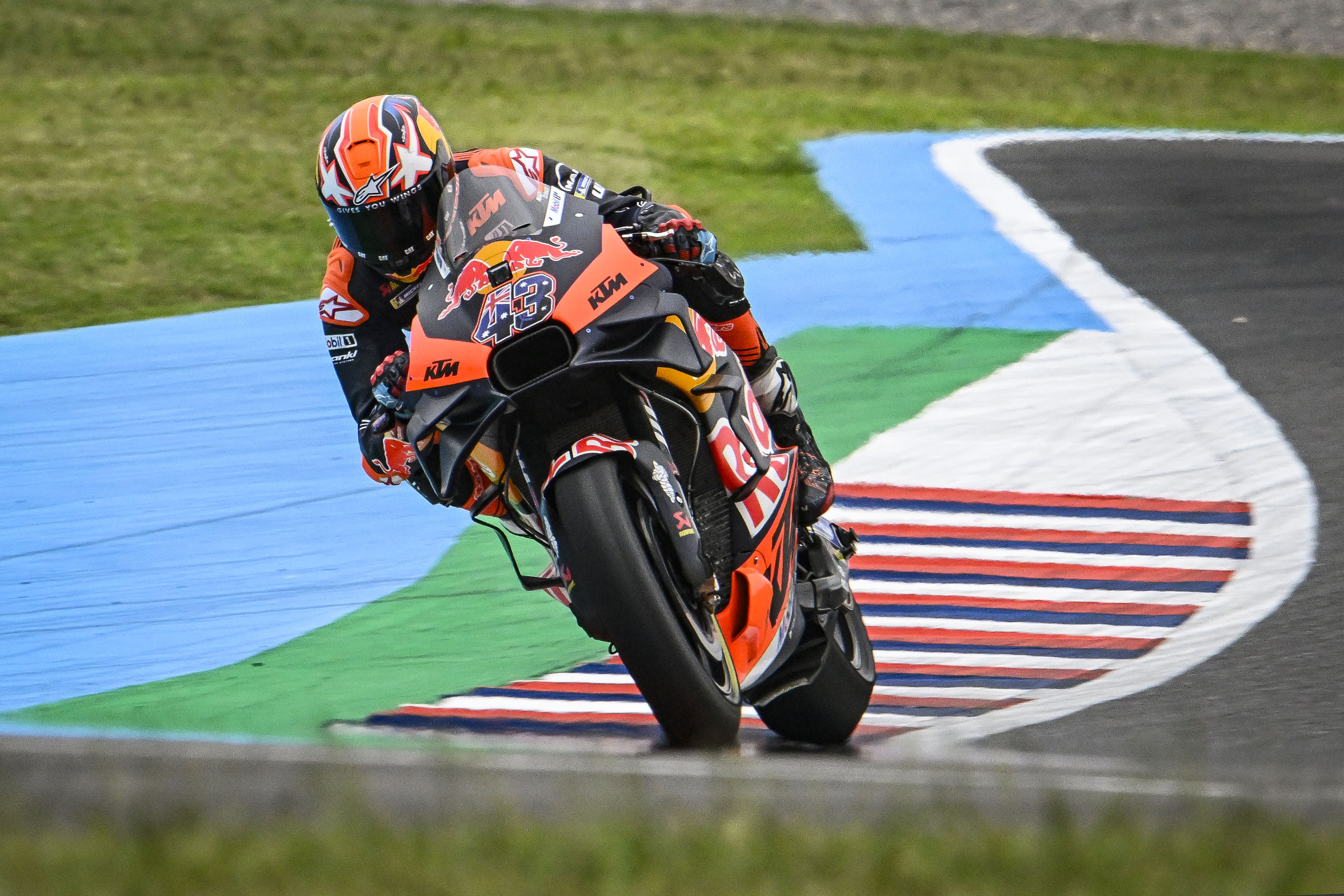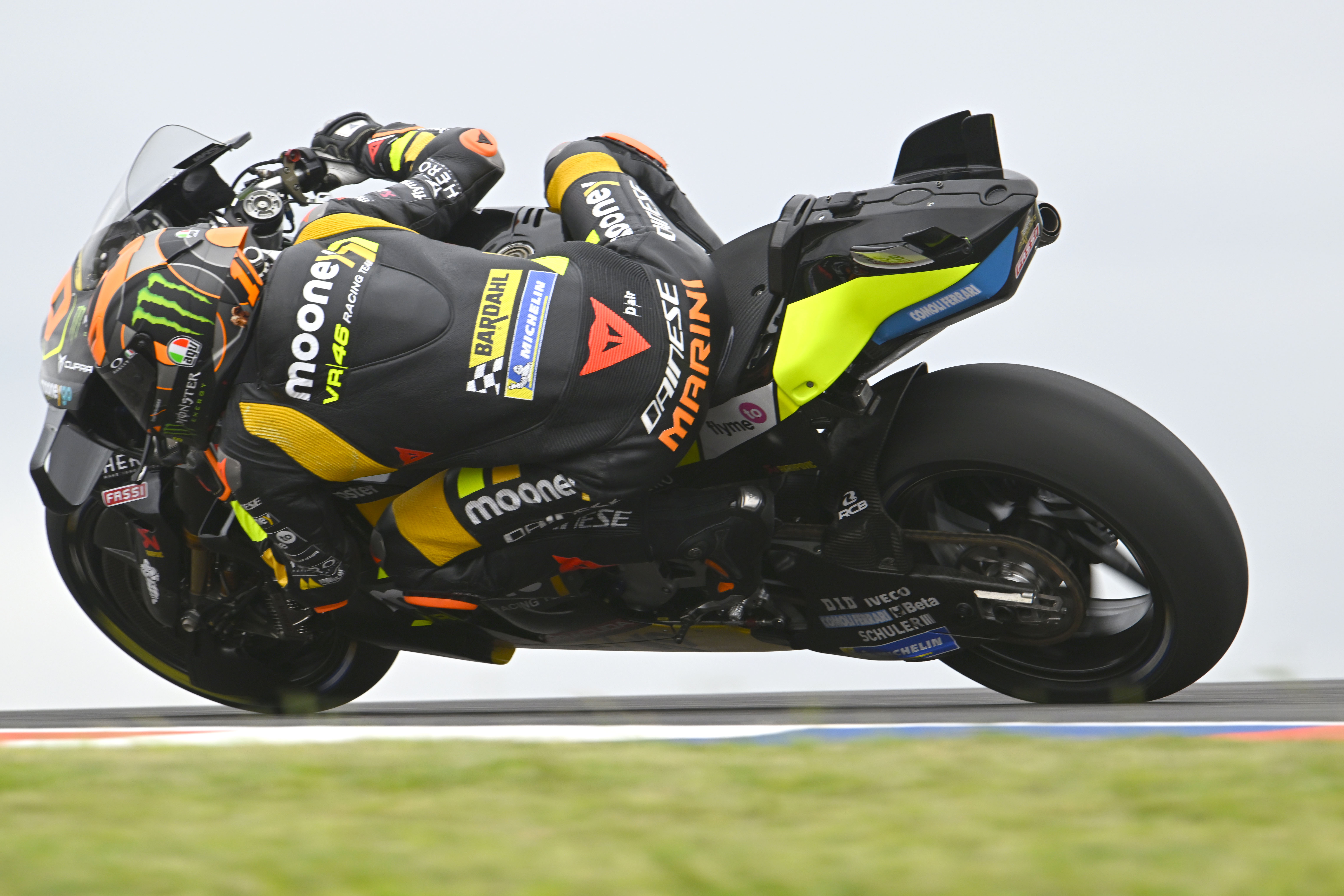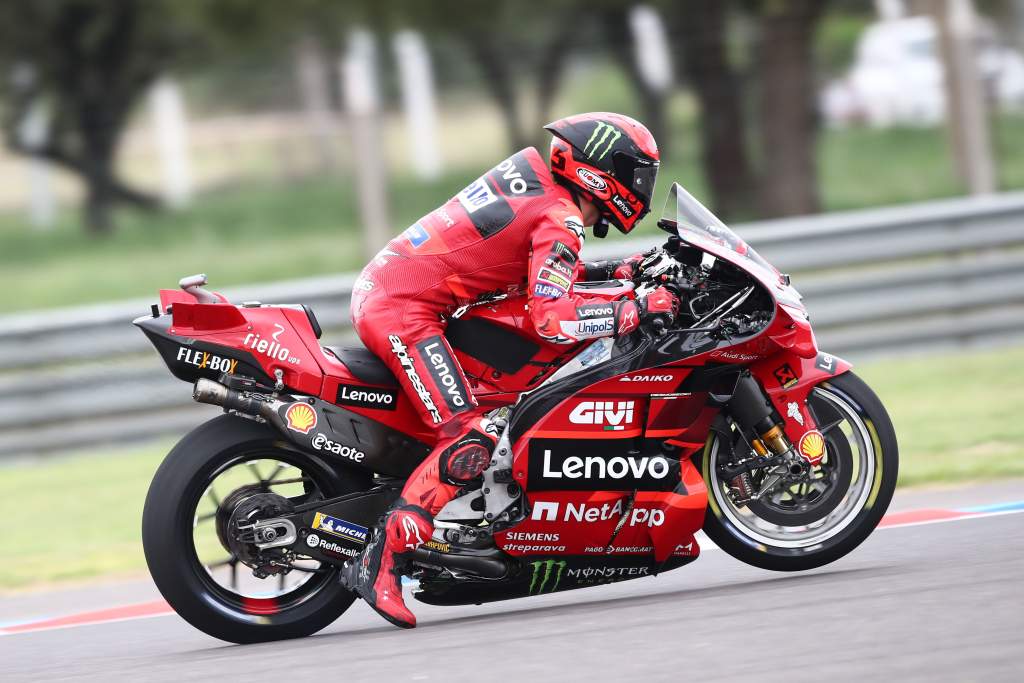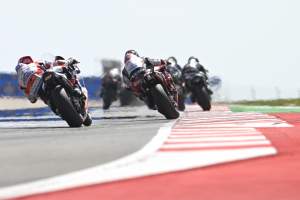The extra stresses of MotoGP’s new weekend format took full effect for the first time in Argentine Grand Prix practice, with reigning world champion Pecco Bagnaia among those feeling on the back foot as a result of the schedule changes brought in to account for Saturday afternoon sprint races.
Under the new weekend timetable Friday’s second practice session is extended from 45 minutes to an hour. But FP3 on Saturday morning no longer counting for direct qualification into Q2, means that the final portion of FP2 is now more a mini-qualifying than a time to work on bike development. That’s particularly the case because qualifying is more important than ever under the new format as the single Saturday morning qualifying session sets the grid for both the sprint and the GP, so having to go via Q1 is now a double handicap.
The issue was less pronounced last weekend at the season-opening Portuguese Grand Prix, in large part because of the two days of testing at Portimao beforehand which had allowed teams and riders to come into the race weekend with a well-established base setting already in place.
Despite battling illness, Bagnaia made it straight through to Q2 with the sixth-fastest time on Friday. But he felt the trouble he had getting up to speed quickly enough at the notoriously low-grip Termas de Rio Hondo circuit proved how much of a challenge the MotoGP grid faces in 2023.
“In Portimao, everything was already there, already settled,” the Ducati rider explained on Friday evening.

“Today it was not, and it’s quite clear seeing my session, my laps, that I was constant but just doing two laps.
“I had to work a lot to improve my situation, and we did it so I’m happy.
“But it’s a bit stressful in P2, because you need to do many laps, you have to improve, and when you’re in a bad situation of feeling it’s not easy.
“The objective was to be in the top 10 and we managed to do it so for that I’m happy.
“But we have to think of another strategy to be more competitive from the start and to have less work to do.
“The feeling with the bike this morning was a bit difficult for me to find the pace. This afternoon was so much better from the start, but we couldn’t do so many laps in a row because we were a bit behind and we had to work.”
He wasn’t the only rider to experience added complications thanks to the format, with KTM rider Jack Miller explaining that he and his team were caught out by miscommunication that denied him a chance to repeat his performance of seven days ago and move directly into Saturday morning’s second qualifying session.
“We wanted a bit more out of the day,” the Australian said after only going 16th quickest on Friday, “but we had a bit of miscommunication in the box. Seems like everyone else put in two new tyres this afternoon, as well as one this morning.
“Pupi’s [crew chief Christian Pupulin] strategy is always to keep a back-up for a red flag, but whether or not we needed it more than a second time attack I’m not sure.
“When I made my first lap, I made a small mistake. I pushed really hard in consecutive laps, but the tyre seemed to be working better on the first lap. I didn’t think we had a spare tyre, but I would have been happy to burn it up.”

Though series boss Carmelo Ezpeleta has hinted that there may be leeway to modify the format slightly as the year progresses, it seems that for now at least it’s here to stay.
And while everyone’s in the same boat with it, VR46 Ducati racer Luca Marini says that they need to adapt to it sooner rather than later, especially if the satellite teams are to continue making underdog performances against the greater resources of the series’ factory-backed squads.
“It’s very difficult with this format to set up well the bike,” said Marini, who was fourth on Friday.

“You start FP1, you have the first exit just to clean the track without the race tyres, and FP2 is a qualifying so you can try just one thing and that’s it.
“It’s the same conditions for everyone, so that’s OK, but we need to work better than the factory teams to be there. It’s not easy, but we’re doing a great job.”





